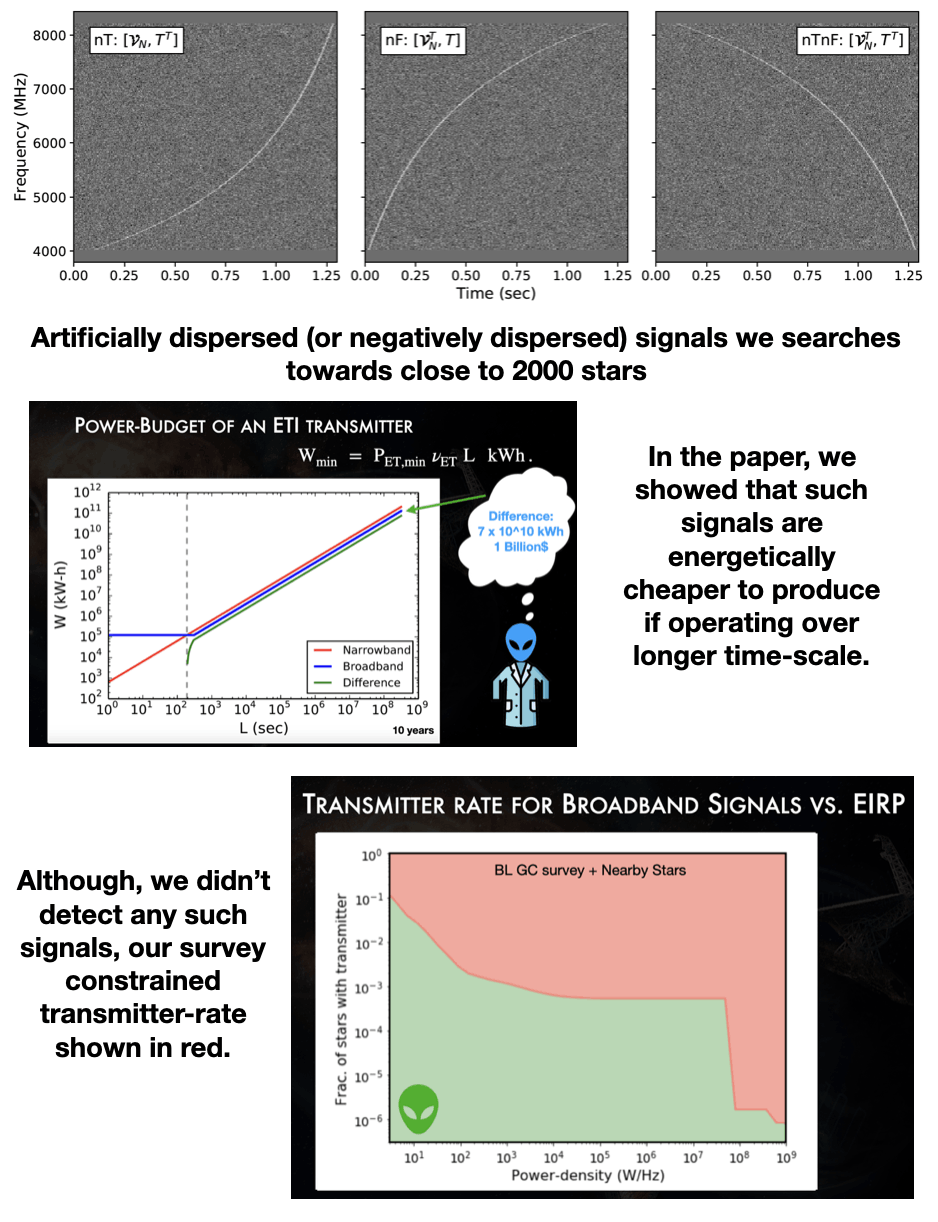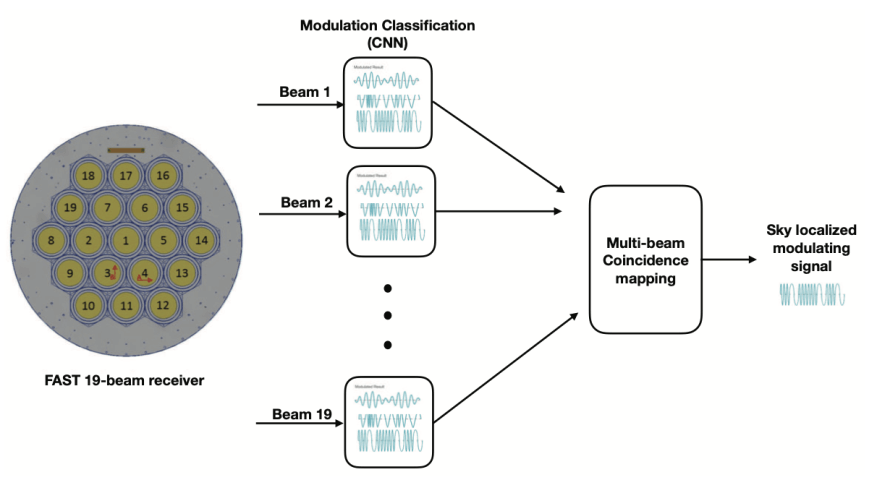
Searching for Artificially dispersed pulses
For the past six decade, the search for extraterrestrial intelligence at radio frequencies has largely been focused on
continuous-wave narrowband signals. In Gajjar et al. (2022) demonstrate that broadband pulsed beacons are energetically efficient compared to the narrowband beacons over longer operational timescales (see image). In Gajjar et al. (2022), we
report the first extensive survey searching for such broadband pulsed beacons towards close to 2000 stars with the GBT. We
report a detailed search leveraging a convolutional neural network classifier on high-performance
GPUs deployed for the very first time in a large-scale search for signals from extraterrestrial intelligence. Using this classifier, we were able to reduce the number of false positives by 97%. Our selection
criteria did not return any signals-of-interest. We thus place a constraint on the existence of broad-
band pulsed beacons in our solar neighborhood: <1 in 1000 stars have transmitter power-densities >10^5 W/Hz.
I was so happy to see Evan Lewis did a nice blog on this article in Astrobites.

